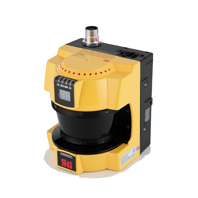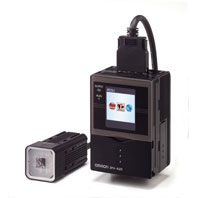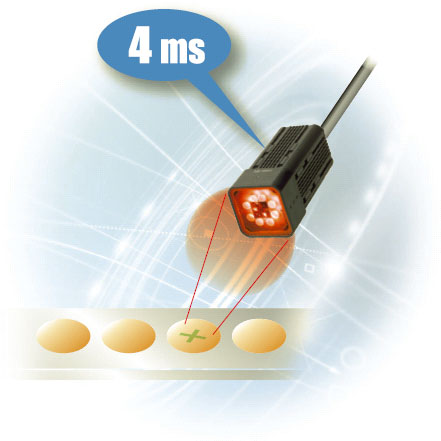06th Jan 2009
SmartSpaces projects and papers
Projects:
The NIST Smart Space Project (Since 1998)
SmartSpace Laboratory - NASA
http://www.nist.gov/smartspace/
Basically they are trying to create a smart meeting room using various sensor
technologies, distributed computing, networking, speech processing, human identification,
and natural language processing. So far, it seems to be a single room Application.
They have a number of published papers and a user documentation.
(NIST Data Flow System II - User's Guide - Draft Version -
http://www.nist.gov/smartspace/ndfs2_doc_index.html)
They are open to collaborative research and development. They have HP Labs
along with many others (IBM, BBN, Fuji/Xerox, SRI) as their early collaborators (1998-2000).
P.s. I need to find out (read) more about this project (current status) and their findings.
http://www.usenix.org/publications/login/2000-7/features/smart.html
(Interview article - reference Jini - old stuff)
-----------------------
NRC Smart Spaces Laboratory - Nokia Research Center
http://research.nokia.com/research/labs/nrc_smart_spaces_laboratory
From their web site -- "The increasing smart digital environment requires
of new solutions and services to guarantee the interoperability of devices
and the communication between devices, people and their context. The Smart
Spaces laboratory researches on an array of themes and applications that
include the remote management of our homes, the tracking of our wellness
and the creation of new ways of working together utilizing smart environments."
They are focused mainly on user experience, interoperability, interaction
and collaboration. Seems to be mobile phone centric; however, they are referring to some interesting application scenarios such as wellness/healthcare.
They have a number of published papers.
P.s. I plan to review some of their papers (relevant to our project/lab) and summarize.
http://www.w3.org/2007/02/dmdwa-ws/talks/sathish.pdf
---------------------
Smart Spaces Center to research dynamic, independent living
Penn State
Not much is published material here. Seems to be a new project focusing on
smart living spaces for aging Americans. It is a inter disciplinary project
involving psychology, sociology, medicine, business and information sciences.
http://live.psu.edu/story/29755
http://ieeexplore.ieee.org/stamp/stamp.jsp?arnumber=04446560
--------------------------------
BlueSpace - IBM Research
Not exactly a Smart Space -- however, it is (in their words) "a next-generation
workspace solution ... Integrating sensors, actuators, displays and wireless networks into architectural elements, ... To increase knowledge workers' productivity by deterring unwanted interruptions, improving awareness and fluid communications".
Their key focus seems to be Concentration, Collaboration and Personalization.
Their long term stated goal is to create a modular workspace solutions that can
be combined in different ways to optimize workspace utilization and worker efficiency.
About 11 people on the project - They seemed to have done a prototype with SteelCase.
They have a number of papers - most recent is dated 2003 (!)
P.s. I need to find out if this is a live project?
----------------------------
Global Smart Spaces
Distributed Computing Group - Trinity College, Dublin
http://www.dsg.cs.tcd.ie/taxonomy/term/65
Seems to be an active research effort. From their web-site -- "Global smart spaces
extend the vision of pervasive computing, in which everyday objects communicate and
collaborate to provide information and services to users, to large geographical areas.
They extend the notion of objects cooperating in a home or an office to the level
of towns, cities, and even countries by integrating a variety of sensor-based and
other systems to provide truly pervasive context-aware services. Such global smart
environments will be heterogeneous as they likely will comprise a multitude of sensors,
networks, and ultimately systems."
They have been periodically publishing their work. Some of them are relevant for our work.
They also seem to be doing some collaborative work. For example with Intel, they
have a project called Hermes: A Software Framework for Mobile, Context-Aware Trails.
They have extensive documents and code to download. I am sure the HP Mediascape folks
will be aware of this project.
http://www.dsg.cs.tcd.ie/hermes
==============================================================================
Papers:
1. Ubiquitous Smart Spaces: -- Georgia Tech
http://www.cc.gatech.edu/fce/pubs/darpa.uss.98.pdf
2. Perception, recognition and integration for interactive environments
PRIMA - INRIA 2007 research project activity report
http://ralyx.inria.fr/2007/Raweb/prima/uid0.html
(Seems to be comprehensive, but limited to Perception and recognition. It has
a few practical scenarios - assisted living, context aware video acquisition,
and augmented meeting)
3. Configuration Challenges for Smart Spaces - USC Technical Report - 1998
Dated and some of the challenges may not be relevant today.
http://research.cens.ucla.edu/people/estrin/resources/conferences/1998july-Heidemann-Estrin-Configuration.pdf
4. Collaboration Applications in Smart Spaces
MIT Artificial Intelligence Lab
A high level overview of their project, focused on Intelligent room
http://www.ai.mit.edu/research/abstracts/abstracts2001/intelligent-working-spaces/16oh.pdf
5. Modeling Human-Computer Interaction in Smart
Spaces: Existing and Emerging Techniques -
Telenor Research and Innovation, Norway
http://intechweb.org/downloadpdf.php?id=5535&PHPSESSID=qi0m437u2faqkijjttds4kuqm6
6. inSpace: Co-Designing the Physical and Digital
Environment to Support Workplace Collaboration
- Georgia Tech, IBM, Steelcase
A 2003 paper with some good information, challenges and findings.
http://www.gvu.gatech.edu/reports/08-03.pdf
7. From the Pervasive 2005 conference:
THE UBISENSE SMART SPACE PLATFORM
http://www.pervasive.ifi.lmu.de/adjunct-proceedings/demo/p073-076.pdf
SCALABLE CONTEXT-AWARE SERVICES - Thesis summary
http://www.pervasive.ifi.lmu.de/adjunct-proceedings/doctoral-colloquium/p145-151.pdf
INTERACTING WITH FEDERATED DEVICES
http://www.pervasive.ifi.lmu.de/adjunct-proceedings/doctoral-colloquium/p153-160.pdf
DEMAC: A DISTRIBUTED ENVIRONMENT FOR
MOBILITY AWARE COMPUTING
http://www.pervasive.ifi.lmu.de/adjunct-proceedings/doctoral-colloquium/p115-121.pdf
Projects: The NIST Smart Space Project (Since 1998) SmartSpace Laboratory - NASA http://www.nist.gov/smartspace/ Basically they are trying to create a smart meeting room using various sensor technologies, distributed computing, networking, speech processing, human identification, and natural language processing. So far, it seems to be a single room Application. They have a number of published papers and a user documentation. (NIST Data Flow System II - User's Guide - Draft Version - http://www.nist.gov/smartspace/ndfs2_doc_index.html) They are open to collaborative research and development. They have HP Labs along with many others (IBM, BBN, Fuji/Xerox, SRI) as their early collaborators (1998-2000). P.s. I need to find out (read) more about this project (current status) and their findings. http://www.usenix.org/publications/login/2000-7/features/smart.html (Interview article - reference Jini - old stuff) ----------------------- NRC Smart Spaces Laboratory - Nokia Research Center http://research.nokia.com/research/labs/nrc_smart_spaces_laboratory From their web site -- "The increasing smart digital environment requires of new solutions and services to guarantee the interoperability of devices and the communication between devices, people and their context. The Smart Spaces laboratory researches on an array of themes and applications that include the remote management of our homes, the tracking of our wellness and the creation of new ways of working together utilizing smart environments." They are focused mainly on user experience, interoperability, interaction and collaboration. Seems to be mobile phone centric; however, they are referring to some interesting application scenarios such as wellness/healthcare. They have a number of published papers. P.s. I plan to review some of their papers (relevant to our project/lab) and summarize. http://www.w3.org/2007/02/dmdwa-ws/talks/sathish.pdf --------------------- Smart Spaces Center to research dynamic, independent living Penn State Not much is published material here. Seems to be a new project focusing on smart living spaces for aging Americans. It is a inter disciplinary project involving psychology, sociology, medicine, business and information sciences. http://live.psu.edu/story/29755 http://ieeexplore.ieee.org/stamp/stamp.jsp?arnumber=04446560 -------------------------------- BlueSpace - IBM Research Not exactly a Smart Space -- however, it is (in their words) "a next-generation workspace solution ... Integrating sensors, actuators, displays and wireless networks into architectural elements, ... To increase knowledge workers' productivity by deterring unwanted interruptions, improving awareness and fluid communications". Their key focus seems to be Concentration, Collaboration and Personalization. Their long term stated goal is to create a modular workspace solutions that can be combined in different ways to optimize workspace utilization and worker efficiency. About 11 people on the project - They seemed to have done a prototype with SteelCase. They have a number of papers - most recent is dated 2003 (!) P.s. I need to find out if this is a live project? ---------------------------- Global Smart Spaces Distributed Computing Group - Trinity College, Dublin http://www.dsg.cs.tcd.ie/taxonomy/term/65 Seems to be an active research effort. From their web-site -- "Global smart spaces extend the vision of pervasive computing, in which everyday objects communicate and collaborate to provide information and services to users, to large geographical areas. They extend the notion of objects cooperating in a home or an office to the level of towns, cities, and even countries by integrating a variety of sensor-based and other systems to provide truly pervasive context-aware services. Such global smart environments will be heterogeneous as they likely will comprise a multitude of sensors, networks, and ultimately systems." They have been periodically publishing their work. Some of them are relevant for our work. They also seem to be doing some collaborative work. For example with Intel, they have a project called Hermes: A Software Framework for Mobile, Context-Aware Trails. They have extensive documents and code to download. I am sure the HP Mediascape folks will be aware of this project. http://www.dsg.cs.tcd.ie/hermes ============================================================================== Papers: 1. Ubiquitous Smart Spaces: -- Georgia Tech http://www.cc.gatech.edu/fce/pubs/darpa.uss.98.pdf 2. Perception, recognition and integration for interactive environments PRIMA - INRIA 2007 research project activity report http://ralyx.inria.fr/2007/Raweb/prima/uid0.html (Seems to be comprehensive, but limited to Perception and recognition. It has a few practical scenarios - assisted living, context aware video acquisition, and augmented meeting) 3. Configuration Challenges for Smart Spaces - USC Technical Report - 1998 Dated and some of the challenges may not be relevant today. http://research.cens.ucla.edu/people/estrin/resources/conferences/1998july-Heidemann-Estrin-Configuration.pdf 4. Collaboration Applications in Smart Spaces MIT Artificial Intelligence Lab A high level overview of their project, focused on Intelligent room http://www.ai.mit.edu/research/abstracts/abstracts2001/intelligent-working-spaces/16oh.pdf 5. Modeling Human-Computer Interaction in Smart Spaces: Existing and Emerging Techniques - Telenor Research and Innovation, Norway http://intechweb.org/downloadpdf.php?id=5535&PHPSESSID=qi0m437u2faqkijjttds4kuqm6 6. inSpace: Co-Designing the Physical and Digital Environment to Support Workplace Collaboration - Georgia Tech, IBM, Steelcase A 2003 paper with some good information, challenges and findings. http://www.gvu.gatech.edu/reports/08-03.pdf 7. From the Pervasive 2005 conference: THE UBISENSE SMART SPACE PLATFORM http://www.pervasive.ifi.lmu.de/adjunct-proceedings/demo/p073-076.pdf SCALABLE CONTEXT-AWARE SERVICES - Thesis summary http://www.pervasive.ifi.lmu.de/adjunct-proceedings/doctoral-colloquium/p145-151.pdf INTERACTING WITH FEDERATED DEVICES http://www.pervasive.ifi.lmu.de/adjunct-proceedings/doctoral-colloquium/p153-160.pdf DEMAC: A DISTRIBUTED ENVIRONMENT FOR MOBILITY AWARE COMPUTING http://www.pervasive.ifi.lmu.de/adjunct-proceedings/doctoral-colloquium/p115-121.pdf
Posted in Pervasive Media | No Comments »





